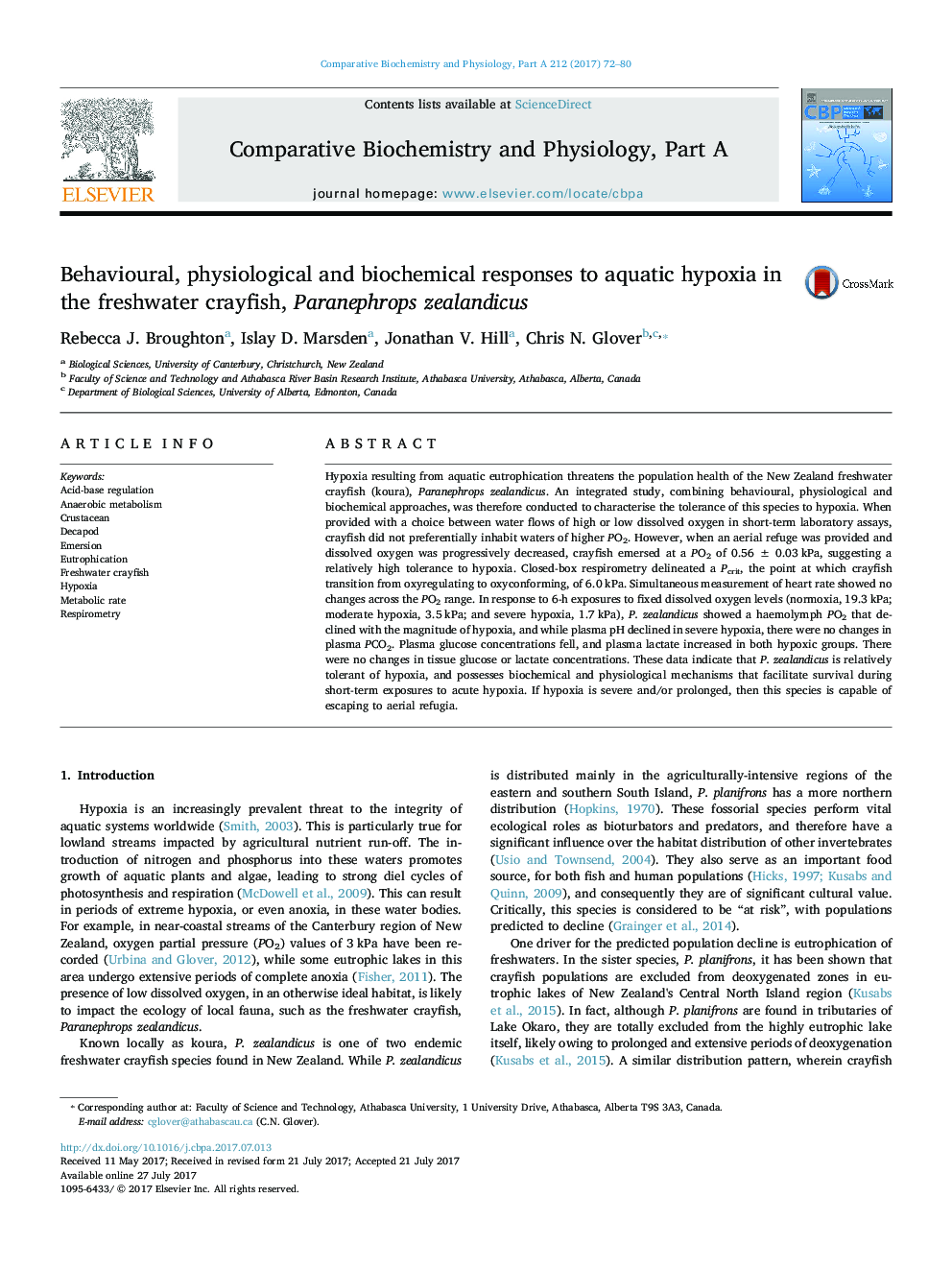| کد مقاله | کد نشریه | سال انتشار | مقاله انگلیسی | نسخه تمام متن |
|---|---|---|---|---|
| 5510257 | 1538975 | 2017 | 9 صفحه PDF | دانلود رایگان |
عنوان انگلیسی مقاله ISI
Behavioural, physiological and biochemical responses to aquatic hypoxia in the freshwater crayfish, Paranephrops zealandicus
دانلود مقاله + سفارش ترجمه
دانلود مقاله ISI انگلیسی
رایگان برای ایرانیان
کلمات کلیدی
موضوعات مرتبط
علوم زیستی و بیوفناوری
بیوشیمی، ژنتیک و زیست شناسی مولکولی
زیست شیمی
پیش نمایش صفحه اول مقاله

چکیده انگلیسی
Hypoxia resulting from aquatic eutrophication threatens the population health of the New Zealand freshwater crayfish (koura), Paranephrops zealandicus. An integrated study, combining behavioural, physiological and biochemical approaches, was therefore conducted to characterise the tolerance of this species to hypoxia. When provided with a choice between water flows of high or low dissolved oxygen in short-term laboratory assays, crayfish did not preferentially inhabit waters of higher PO2. However, when an aerial refuge was provided and dissolved oxygen was progressively decreased, crayfish emersed at a PO2 of 0.56 ± 0.03 kPa, suggesting a relatively high tolerance to hypoxia. Closed-box respirometry delineated a Pcrit, the point at which crayfish transition from oxyregulating to oxyconforming, of 6.0 kPa. Simultaneous measurement of heart rate showed no changes across the PO2 range. In response to 6-h exposures to fixed dissolved oxygen levels (normoxia, 19.3 kPa; moderate hypoxia, 3.5 kPa; and severe hypoxia, 1.7 kPa), P. zealandicus showed a haemolymph PO2 that declined with the magnitude of hypoxia, and while plasma pH declined in severe hypoxia, there were no changes in plasma PCO2. Plasma glucose concentrations fell, and plasma lactate increased in both hypoxic groups. There were no changes in tissue glucose or lactate concentrations. These data indicate that P. zealandicus is relatively tolerant of hypoxia, and possesses biochemical and physiological mechanisms that facilitate survival during short-term exposures to acute hypoxia. If hypoxia is severe and/or prolonged, then this species is capable of escaping to aerial refugia.
ناشر
Database: Elsevier - ScienceDirect (ساینس دایرکت)
Journal: Comparative Biochemistry and Physiology Part A: Molecular & Integrative Physiology - Volume 212, October 2017, Pages 72-80
Journal: Comparative Biochemistry and Physiology Part A: Molecular & Integrative Physiology - Volume 212, October 2017, Pages 72-80
نویسندگان
Rebecca J. Broughton, Islay D. Marsden, Jonathan V. Hill, Chris N. Glover,